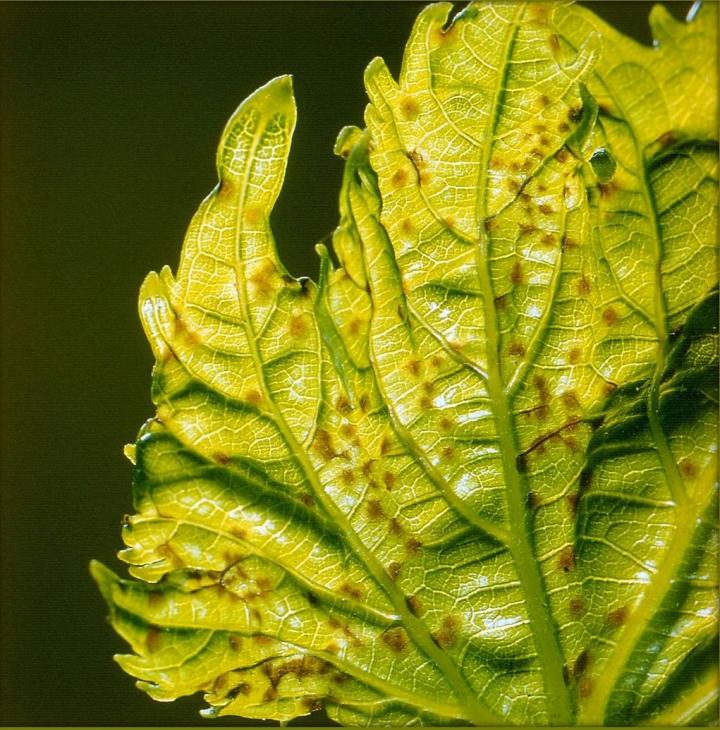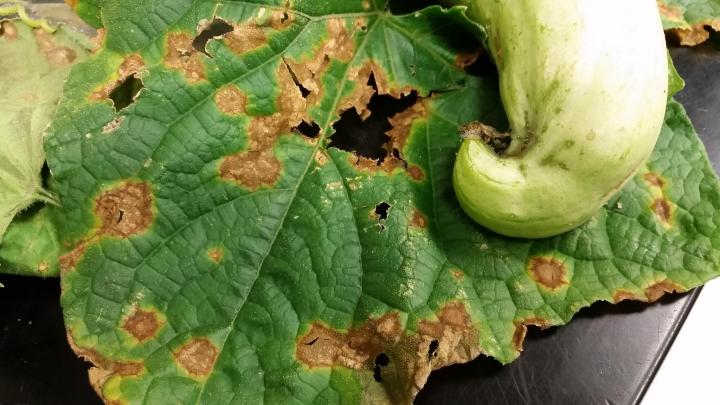






Fungal anthracnose attacks these young grapevine leaves.
What is anthracnose? This fungal disease affects many plants, including vegetables, fruits, and trees. It causes dark, sunken lesions on leaves, stems, flowers, and fruits. It also attacks developing shoots and expanding leaves. It can spread very quickly during rainy seasons.
Anthracnose is a general term for a variety of diseases that affect plants in similar ways. Anthracnose is especially known for the damage that it can cause to trees. Anthracnose is caused by a fungus, and among vegetables, it attacks cucurbits.
Anthracnose can survive on infected plant debris and is very easily spread. Like rust, it thrives under moist and warm conditions and is often spread by watering.

Plants and Gardening: How to Choose a Garden
Blight Treatment – Symptoms And Control Of Southern Blight On Plants
Cabbage Worms: How to Identify and Get Rid of Cabbageworms
Cucumber Beetles: How to Identify and Get Rid of Garden Pests
Cutworms: How to Identify and Get Rid of Cutworms in Your Garden
Copyright © www.100flowers.win Botanic Garden All Rights Reserved